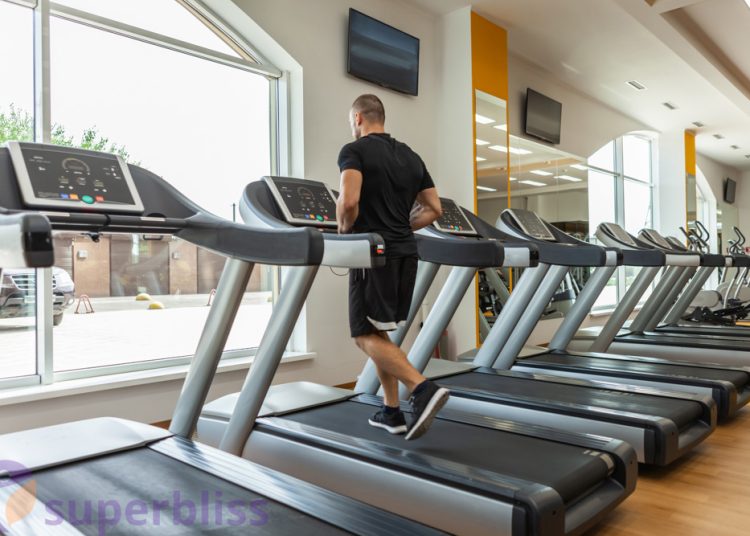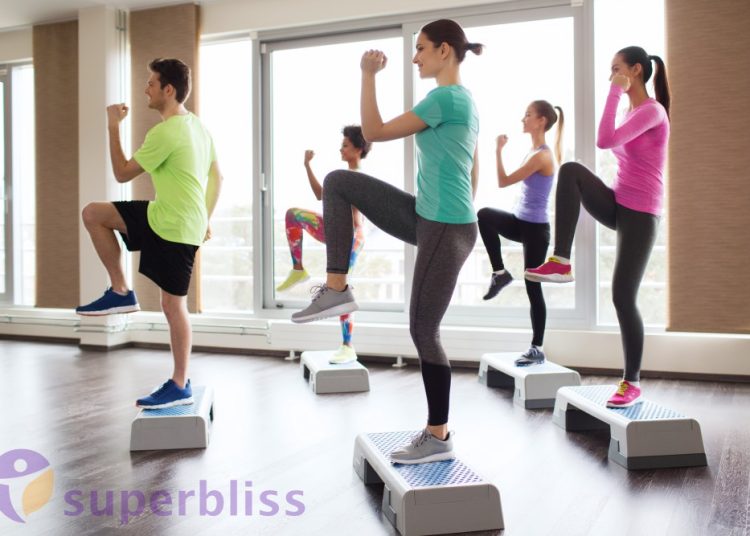Table of Contents
In today’s sedentary lifestyle, where many of us spend long hours sitting and are increasingly reliant on technology, incorporating cardio workouts into our routines has become crucial for maintaining optimal health. Cardio, short for cardiovascular, refers to activities that elevate your heart rate and increase oxygen circulation throughout your body. These exercises strengthen your cardiovascular system, which includes your heart, blood vessels, and lungs, leading to numerous health benefits.
1 Understanding Cardiovascular Fitness
Cardiovascular fitness is a measure of your body’s ability to supply oxygen to your muscles during physical activity. It reflects the efficiency of your heart and lungs in delivering oxygen-rich blood to your working muscles. Improving cardiovascular fitness enhances your endurance, allowing you to engage in physical activities for longer periods without feeling fatigued. Regular cardio workouts improve your heart’s pumping capacity, increase lung function, and improve the body’s overall efficiency in using oxygen.
2 Benefits of Cardio Workouts
Engaging in regular cardio exercises offers a wide range of benefits for both your physical and mental well-being. Let’s explore some of the key advantages:
- Weight loss: Cardio workouts burn calories and contribute to creating a calorie deficit, aiding in weight loss and weight management.
- Heart health: Cardio exercises strengthen the heart muscles, improve blood flow, lower blood pressure, and reduce the risk of cardiovascular diseases.
- Increased stamina: Regular cardio workouts enhance your endurance and stamina, allowing you to perform daily activities with less fatigue.
- Mental well-being: Cardio exercises release endorphins, also known as “feel-good” hormones, which help reduce stress, anxiety, and symptoms of depression.
- Improved sleep: Engaging in cardio activities promotes better sleep quality, helping you fall asleep faster and enjoy more restful nights.
- Increased energy levels: Regular cardio workouts boost your energy levels, making you feel more alert and focused throughout the day.
- Stronger immune system: Cardio exercises enhance immune function, reducing the risk of common illnesses and infections.
- Better cognitive function: Studies suggest that cardio workouts can improve cognitive function, memory, and overall brain health.

3 Types of Effective Cardio Exercises
There are various forms of cardio exercises to choose from, ensuring there’s something for everyone’s preferences and fitness levels. Here are 15 effective cardio workouts to consider:
Running and Jogging
Running and jogging are simple yet highly effective cardio exercises. They require minimal equipment and can be done outdoors or on a treadmill. These activities engage multiple muscle groups and elevate your heart rate, leading to improved cardiovascular fitness.
Cycling
Cycling, whether indoors on a stationary bike or outdoors on a road or trail, is a low-impact cardio workout that strengthens your legs, glutes, and core muscles. It can be a fun and enjoyable way to explore your surroundings while getting an effective workout.
Swimming
Swimming is a full-body workout that puts minimal stress on your joints. It engages all major muscle groups and provides an excellent cardiovascular challenge. Whether you’re doing laps in a pool or enjoying open water swimming, this activity offers a refreshing and low-impact cardio option.
High-Intensity Interval Training (HIIT)
HIIT involves short bursts of intense exercise alternated with short recovery periods. This type of workout elevates your heart rate quickly, leading to efficient calorie burning and improved cardiovascular fitness. HIIT workouts can be customized and adapted to various exercises, such as burpees, jumping jacks, or sprints.
Jumping Rope
Jumping rope is a portable and inexpensive cardio exercise that can be done anywhere. It strengthens your calves, shoulders, and core while providing a high-intensity cardiovascular workout. Incorporating different jump rope techniques and variations can keep your routine engaging and challenging.
Dancing
Dancing is a fun and expressive form of cardio exercise. Whether you prefer Zumba, hip-hop, salsa, or any other dance style, moving to the rhythm helps elevate your heart rate, burn calories, and improve coordination. Dancing also boosts your mood and allows for creative self-expression.
Stair Climbing
Stair climbing is an effective cardio workout that targets your leg muscles and elevates your heart rate. You can use stairs in your home, office building, or outdoor locations like stadiums. Climbing up and down stairs provides a challenging and convenient workout option.
Rowing
Rowing is a full-body workout that engages your upper and lower body muscles, including your back, arms, and legs. It provides a low-impact and joint-friendly cardio option while promoting strength and endurance. Rowing machines are available in many gyms or can be purchased for home use.
Circuit Training
Circuit training involves performing a series of exercises in succession, targeting different muscle groups. By incorporating cardiovascular exercises like jumping jacks, mountain climbers, or kettlebell swings into your circuit, you can achieve both strength and cardio benefits in a time-efficient manner.
Kickboxing
Kickboxing combines martial arts techniques with cardiovascular exercise. It involves punching, kicking, and defensive movements that engage your entire body. Kickboxing classes or home workout videos can provide a challenging and dynamic cardio workout while improving coordination and self-defense skills.
Step Aerobics
Step aerobics involves using an elevated platform to perform various cardio exercises. It strengthens your lower body, improves coordination, and elevates your heart rate. Step aerobics classes are available at many fitness centers and can be tailored to different fitness levels.
Elliptical Training
Elliptical training provides a low-impact and joint-friendly cardio workout. It simulates movements similar to running or walking while minimizing stress on your joints. Elliptical machines are commonly found in gyms and offer adjustable resistance levels to accommodate different fitness goals.
CrossFit
CrossFit workouts combine high-intensity cardio exercises, weightlifting, and bodyweight movements. These challenging workouts improve strength, endurance, and cardiovascular fitness. CrossFit classes led by certified trainers ensure proper technique and safety.
Hiking
Hiking in nature not only offers scenic views but also provides an excellent cardio workout. Walking uphill or on uneven terrain engages your leg muscles and challenges your cardiovascular system. It’s a great way to reconnect with nature while getting a dose of exercise.
Team Sports
Participating in team sports such as soccer, basketball, or volleyball can be a fun and engaging way to get your cardio workout. These sports involve dynamic movements, including running, jumping, and changing directions, which contribute to improved cardiovascular fitness and overall agility.

4 Designing an Effective Cardio Workout Routine
Now that you’re familiar with various cardio exercises, it’s important to design a well-rounded and effective workout routine. Consider the following steps:
Setting Goals
Determine your fitness goals, whether they involve weight loss, improving endurance, or overall cardiovascular health. Setting specific and measurable goals will help guide your workout routine.
Choosing the Right Exercises
Select a combination of cardio exercises that you enjoy and that align with your goals. It’s important to vary your workouts to challenge different muscle groups and prevent boredom.
Determining Frequency and Duration
The American Heart Association recommends at least 150 minutes of moderate-intensity cardio exercises or 75 minutes of vigorous-intensity exercises per week. Distribute your workouts evenly throughout the week and adjust the duration based on your fitness level.
Warming Up and Cooling Down
Before starting your cardio session, warm up your body with dynamic stretches or light aerobic movements. Cooling down afterward with static stretches helps prevent muscle soreness and promotes flexibility.
Monitoring Intensity
Pay attention to your heart rate and perceived exertion during cardio workouts. Aim to reach a moderate-to-vigorous intensity level for maximum benefits. Using a heart rate monitor or fitness tracker can help track your intensity levels.
Incorporating Variety
Include different types of cardio exercises in your routine to target various muscle groups and prevent plateauing. Mixing high-intensity workouts with steady-state exercises adds variety and challenges your body in different ways.
5 Tips for a Safe and Effective Cardio Workout
To ensure a safe and effective cardio workout experience, keep the following tips in mind:
Start Slowly and Progress Gradually
If you’re new to cardio exercises, start with low-impact activities and gradually increase intensity and duration over time. Allow your body to adapt and avoid overexertion or injury.
Listen to Your Body
Pay attention to how your body feels during and after workouts. If you experience pain, dizziness, or excessive fatigue, take a break and consult a healthcare professional if necessary.
Stay Hydrated
Drink water before, during, and after your cardio workouts to stay properly hydrated. Hydration helps maintain performance and prevent dehydration-related issues.
Use Proper Form
Learn and practice correct form and technique for each exercise to minimize the risk of injuries. If you’re unsure, seek guidance from a fitness professional.
Wear Appropriate Footwear
Invest in proper footwear that provides support and cushioning for your chosen cardio activities. Ill-fitting shoes can lead to discomfort or injury.
Mix Cardio with Strength Training
Incorporate strength training exercises into your routine to build lean muscle mass, enhance metabolism, and improve overall body composition.
Seek Professional Guidance
If you’re new to cardio workouts or have specific health concerns, consult a certified fitness professional or a healthcare provider to get personalized guidance and recommendations.
6 Frequently Asked Questions (FAQs)
What is the recommended frequency of cardio workouts?
The American Heart Association recommends at least 150 minutes of moderate-intensity cardio exercises or 75 minutes of vigorous-intensity exercises per week.
How long should a cardio session last?
The duration of a cardio session depends on your fitness level and goals. Aim for 30 minutes or more per session, gradually increasing duration as your endurance improves.
Can I do cardio exercises every day?
Yes, you can do cardio exercises every day if your body feels capable and you vary the intensity and type of exercises. However, it’s important to listen to your body and take rest days when needed.
Is cardio alone enough for weight loss?
While cardio exercises contribute to calorie burning and weight loss, combining them with a balanced diet and strength training can yield better results. Strength training helps build muscle, which increases your metabolism and promotes fat loss.
What are some alternative cardio options for people with joint issues?
Low-impact cardio exercises such as swimming, cycling, using an elliptical machine, or water aerobics are gentle on the joints and provide effective cardiovascular workouts.
7 Bottom Line
Incorporating effective cardio workouts into your fitness routine is a fantastic way to improve your cardiovascular health, boost endurance, and achieve weight loss goals. With a wide variety of exercises to choose from and a well-designed workout routine, you can enjoy the numerous benefits of cardio while keeping your workouts engaging and enjoyable.
Remember to consult with a healthcare professional or fitness expert before starting any new exercise program, especially if you have underlying health conditions or concerns. So, lace up your shoes, choose your favorite cardio activity, and get ready to elevate your fitness journey!
Note: The above content is for informational purposes only and should not replace professional medical advice. Always consult with a qualified healthcare provider before making any dietary or lifestyle changes.


 Fitness
Fitness




 Weight Loss
Weight Loss




 Health
Health


 Popular Items
Popular Items Health Recipes
Health Recipes




 Health Tools
Health Tools Media Feeds
Media Feeds



 Discover:
Discover: 










Discussion about this post